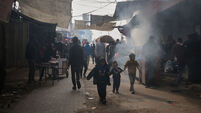Black box recovered from Belgian train wreck
Search teams today located one black box from the wreckage around two trains that crashed into each other near Brussels, killing 18 people and injuring more than 170.
One train driver survived the crash with serious injuries but he was not well enough to be questioned, railway officials said.














